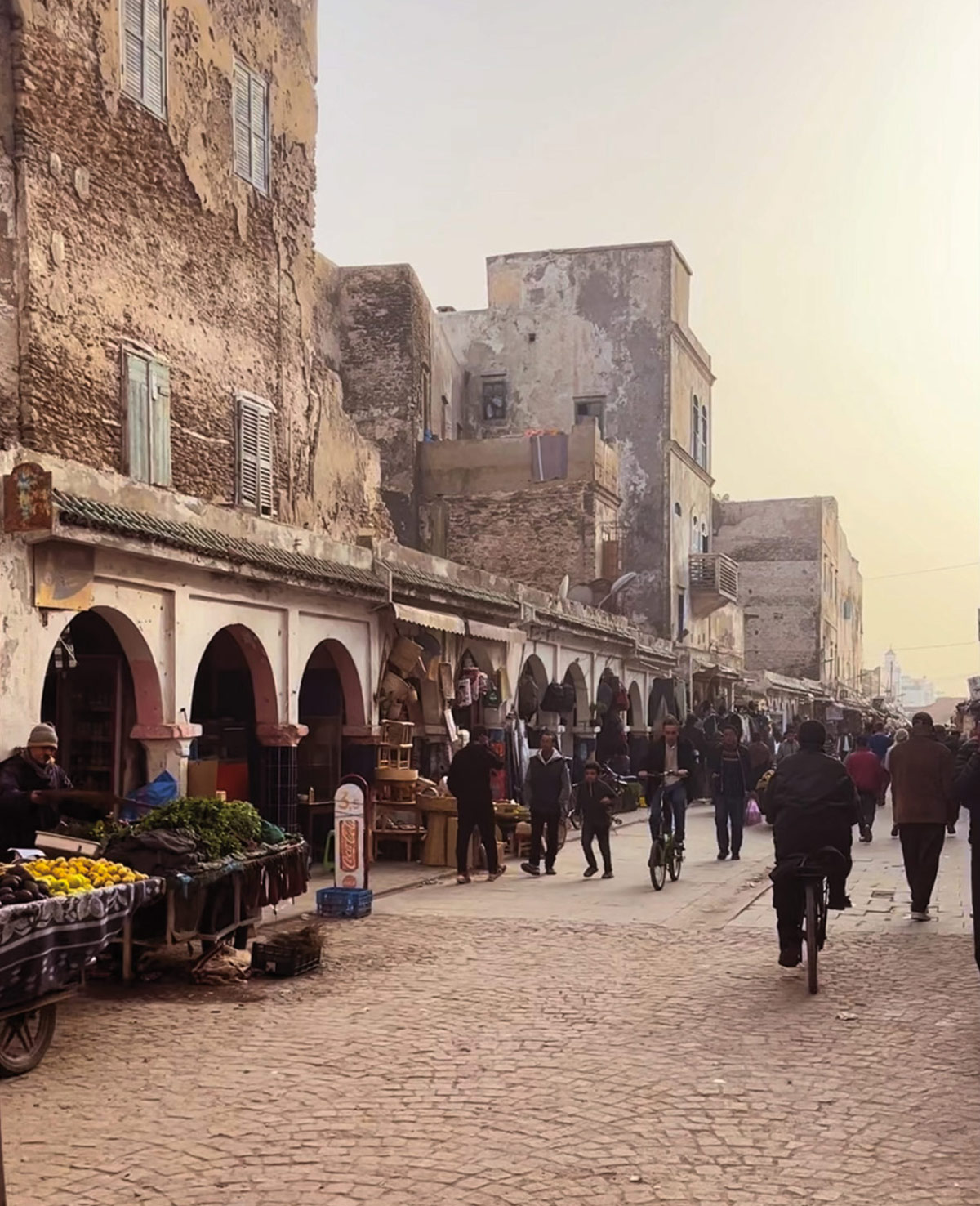Pie Herring
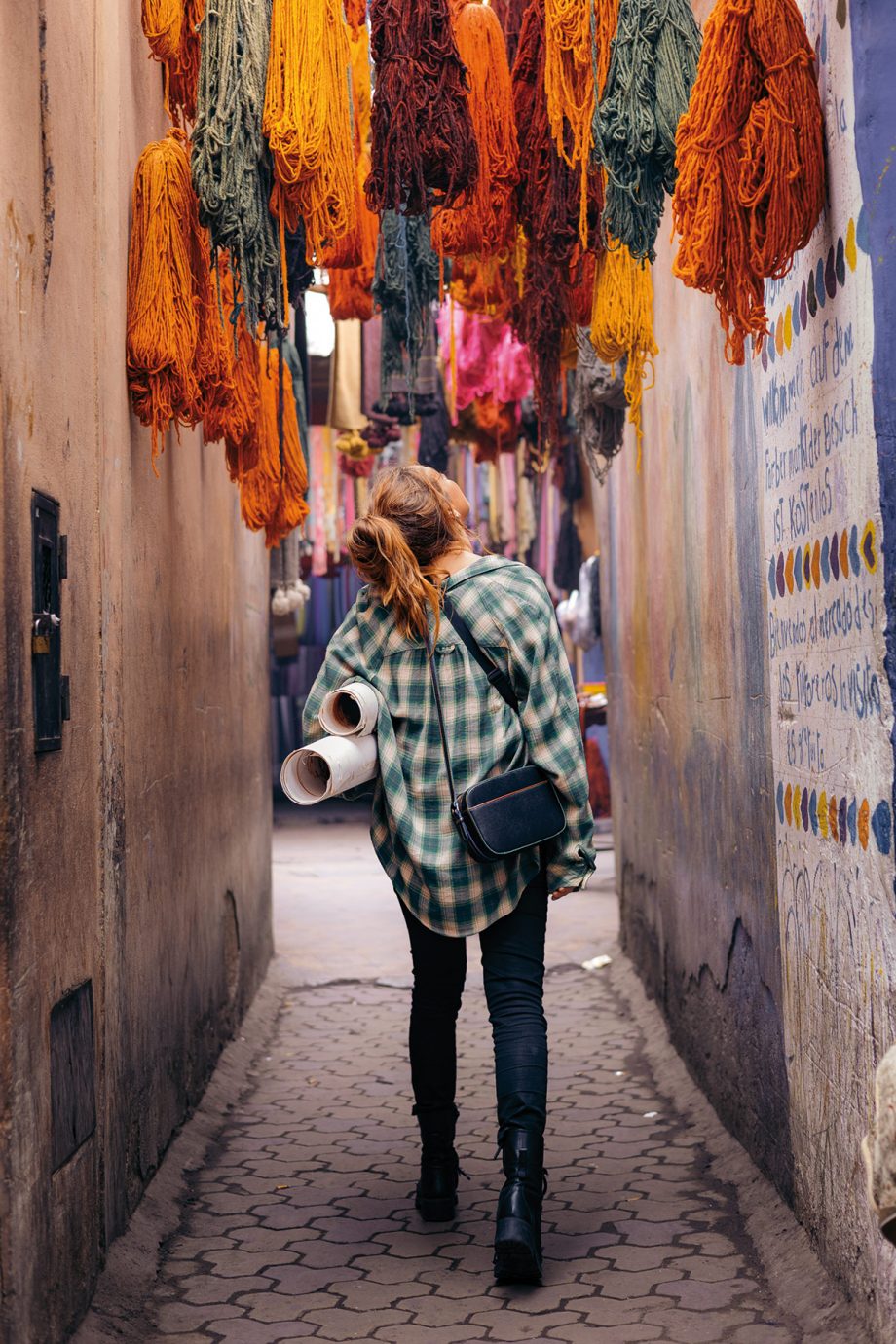
ARTIST RESIDENCY. RIAD ALENA RESIDENCY LOCATION MARRAKECH MOROCCO WORDS PIE HERRING PHOTOGRAPHER & FILMMAKER CHLOE KELENY STARRING PIE HERRING UNITED KINGDOM @PIE_HERRING_ART WWW.PIEHERRING.COM
I was invited out to Marrakech for a two-month long artist residency by a small hotel called Riad Alena. I lived in the Riad for my duration and they provided a space on their rooftop for me to work. At the end of my time there we hosted a pop-up art exhibition and event in the Riad. 20% was given to a local orphanage organisation called Fiers et Forts. It was amazing seeing the work suspended from the rooftop and adorning the walls of where I had been living and creating for the previous two-months. Whilst in Morocco I travelled to the Essaouira coastline, Agafay desert and the Atlas Mountains in order to get a sense of the different landscapes and the culture of people inhabiting these areas.
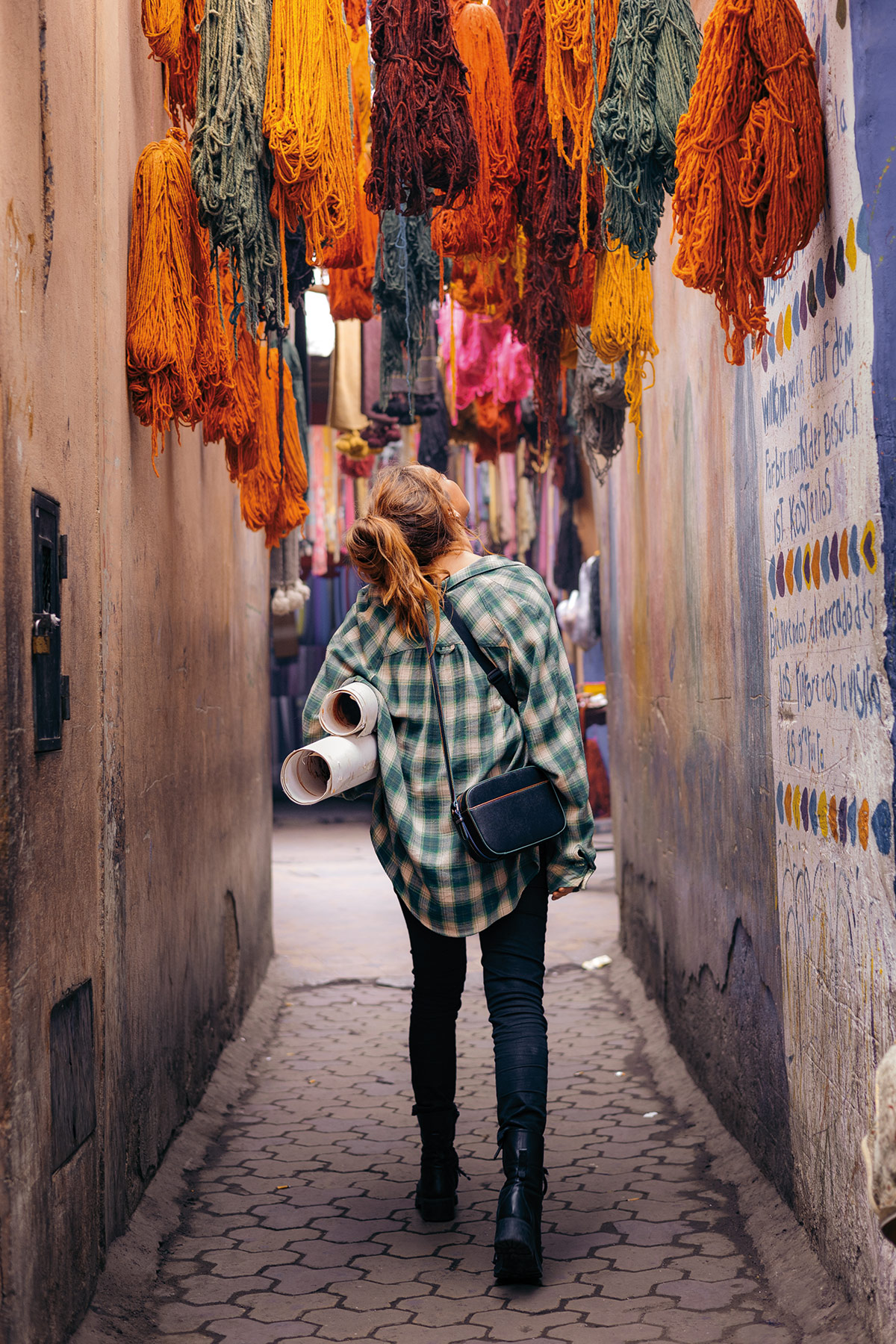
I wanted to use the residency as a chance to experiment and challenge myself within my practice. I knew I wanted to create a strong collection of work in the short time frame of two-months. This forced me to be more forgiving with my work, I had less time to consider the direction of each piece. It was a test in trusting my intuition which resulted in me learning to paint more freely. The Marrakech souks are so lively and colourful and I wanted to translate this within my works by incorporating more energetic brushwork and a fuller palette. Each piece has been made from oil paint and perhaps more significantly, raw pigment powders which were bought from the Marrakech souks. A man saw my painted jeans as I was wandering around and took me to where I could find these special pigments. The texture of these paints are amazing, gritty almost and not too dissimilar from the clay-like walls of the Marrakech Medina.
What do you look for in your travels, what do you gain from integrating into other cultures?
Not only does travel give me a greater insight into the world, it’s people and their customs. It also heavily fuels my inspiration for creativity. By exploring and integrating myself into unfamiliar lands my painter’s brain is fed with new information of people, patterns, colour, rituals and energies. I feel alive in these moments, and they lead to an overwhelming desire to paint. I find it compelling how my language of painting with its brushwork, colour palette, form and subject matter can transform significantly from place to place. It reveals to me the impact that a new environment can have on my painting practice. This excites and drives me forward.
How do you decide the characters in your paintings, where do you start and how do you develop them?
When I observe people for the first time I often catch myself questioning what, if any physical or emotional characteristic would make for an interesting painting. I find it very hard to walk away from characters who intrigue me. I often start with aesthetics. Something about the person has held my fascination, if even for a second. In terms of development, it depends on the painting. Ideally I would like to sit with them on one or more occasions, to discover and understand more about their life, quirks, clothes, the objects that they own etc. Certain situations have allowed for this, for instance when I am working alongside organisations who have given me access to unique people and their circumstance, or when I am living in one area for a long time and I am able to pay multiple visit to a sitter. I’d like for them to be familiar with me so as to develop trust. I will sketch, take many photographs and work from there. That being said, I think it is also important to trust intuition and leave the mystique of a character as something to explore in the painting process itself. I recently created a series of figurative pieces whereby the subjects had no idea they were being painted. I was working from photographs which I had taken of them. Not only did this practice allow me to characterise the sitters from my own outsider interpretation, it also made for a lovely surprise when I was able to show them their paintings.
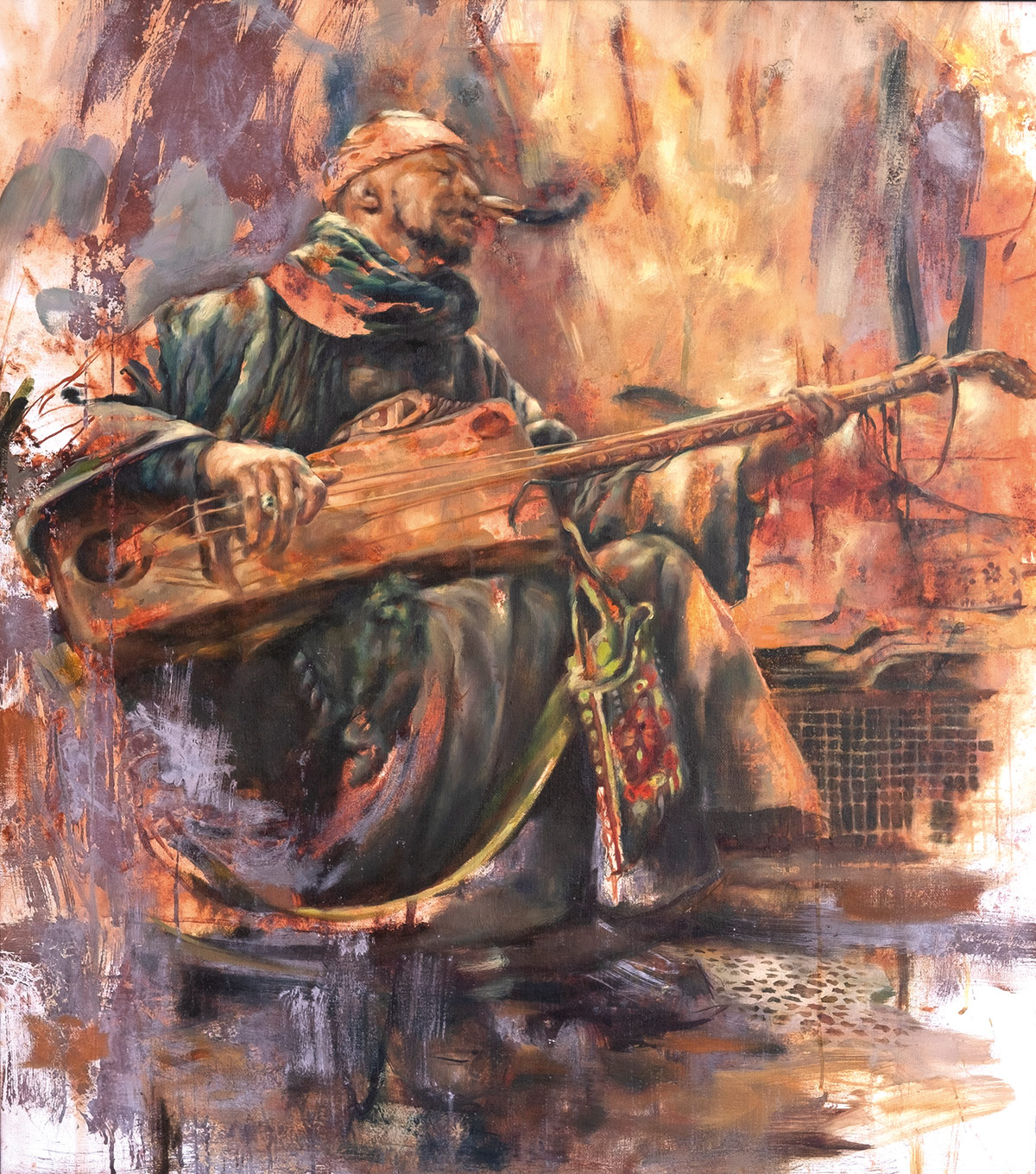
Can you tell us the story of someone you met in Africa who had the biggest impact on you?
In 2021 I visited Lamu, a historic fishing town on the coast of Kenya. Everyday I would walk past a man sitting on a step near to my house. He was feeding stray cats. The man had the most characterful appeal with a warming smile, slim frame and traditional clothing. When I returned home from Lamu I couldn’t get this character out of my head. I was beating myself up for not having spoken to him, to find out more about who he was and why he was on that step everyday. I decided to give up my apartment, studio and life in London to go in search of his story. When I returned in 2022 I was delighted to find him sitting on the same step and still feeding the cats. With the help of a translator I was able to discover that his name is Master Tike. Opposite to where he sits there is a very old and abandoned market stall. Master Tike used to sell dried fish here. During which he formed a strong bond with the cats who came in search of food. When his business closed, he would dedicate the rest of his life to keeping these cats fed. I began to paint Master Tike and posted my progress online. Out of the blue I started to receive messages from people who knew him, who had grown up on the island. They told me stories of Master Tike’s inherent generosity, feeding the children who had little and helping the poorer families on the island. The final pleasure came when Master Tike allowed me to create a frame for the painting using some wood taken directly from his old market stall. Master Tike taught me that there is always more to people than what meets the eye, and how our interactions with unfamiliar people can help us build a greater awareness of the world that we live in. He encouraged me to trust my intuition and to go beyond my comfort zone in order to learn. I will always be grateful to him for that. As a thank you to Master Tike and the rest of the Lamu community for having me I was able to give 25% of the proceeds from my works made in Lamu to the local Anidan Children’s Orphanage.
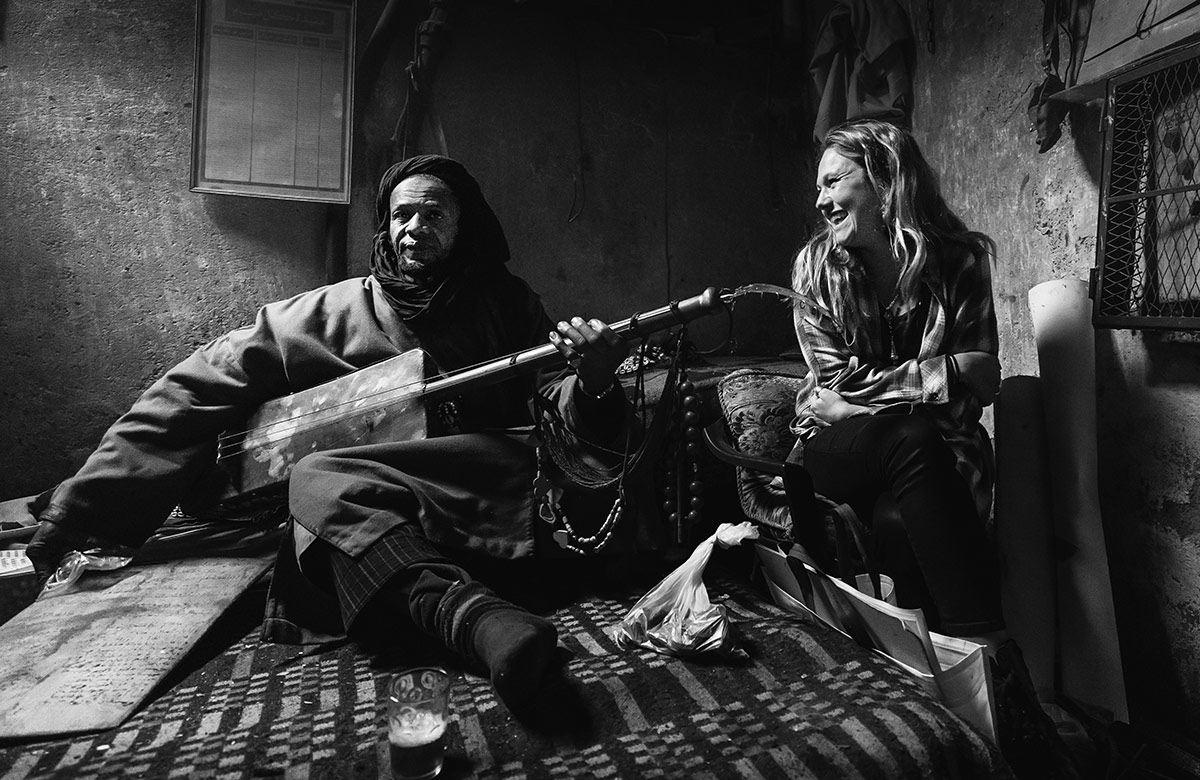
What can you tell us about your collaborations with non-profit organisations to raise funds through art?
Since 2021 I have worked alongside various non-profits in a bid to tell their stories with an artistic voice, and to give a platform to heroic people that we may not necessarily hear about in the art world. Last year myself and a Kenyan photographer called Migwa Nthiga were invited by The Milgis Trust to travel to Northern Kenya to live with and learn about the Samburu Tribe. We collaborated together to produce Ndoto: Under Her Eye, an exhibition held at Matbronze Gallery, Nairobi. The show featured a series of work inspired by our time with the Samburu. We gave 40% of our proceeds to The Milgis Trust. Prior to this, in 2021 I collaborated with a team of artists to tell individual stories of the impact that the COVID19 lockdowns had in rural communities based around Lewa Wildlife Conservancy, Kenya. With the help of Lewa we were able to put on an exhibition in New York to raise funds for these communities. Whilst I was in Lewa I heard about the devastating number of young girls being forced out of education as a result of the lockdowns. This lead to one of my paintings ‘The Beaders’ being donated at an auction with Francis Holland School for Girls in London. The results raised near to £10,000 and the school donated this sum to Lewa Wildlife Conservancy to set up a fund for young girls education in Kenya. This was a rewarding experience for which I am very grateful to Francis Holland School and Lewa Wildlife Conservancy.
Do you believe art can change a person’s way of thinking, why, or in what way?
Yes, I believe that art has the power to give beauty and consideration to areas of life that may often be overlooked. Art can encourage the idea of looking from a new perspective. It can give way to a sensory understanding from another’s lived experience. Art can give visual representation to fantasy, myth and abstract thought. But ultimately as with any experience in life, we absorb art based on our own lived reality and our perception of truth. For these reasons I believe that art does have the power to alter a person’s way of thinking but what changes occur are in the eye of the beholder.
If you had the power, what would be the first thing you would change about this world?
Big question! I think I would have many different answers to this throughout the years. Although recently, due to a friends father’s illness and subsequent passing I have been thinking a lot about the workers who cared for him during this time. I witnessed first-hand the challenges that many of the nurses and support staff faced with confused patients, grieving families and minimum sleep. I wish people in these positions would be praised more for the heroic work they do.
